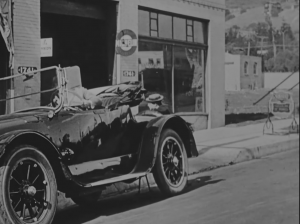How to be a Media Operator
When conducting you need be very tidy, an hour and a half early, and you need to leave the place tidier than you came.
Consider
- Communication
- Location Release
- Insurance
- Location
- Performance Release
- Safety
- Nightmare
- Serendipity
Project Brief 3
Examples of some good interview material
One Minute Wonder
There’s many panning shots of various nearly random material to add interest. Even random shit like just filming the hands on her lap.
My Favourite Picture of You
A bunch of old photos and even an old video recording. The interview plays over a bunch of old photos and videos conveying memories. The interview sounds like it’s conducted by someone who knows this woman. “Sometimes it’s kind of fun to back and talk about where we’ve been” The whole interview actually seems to be a bunch of old photos and videos of this woman Matilda growing up and living life.
Oliver
He’s made this video about his little brother really interesting with just with the use of camera angles, close ups of eyes, videos of interesting material like pets, old source material of cityscapes and stuff. He’s really made this really boring kid look interesting and makes the interview look quite meaningful with the use of music, some really cool over the shoulder camera shots, and just shots capturing facial expressions from various angles. Really fantastic work by Lucas James.
Haha Bryan said “Maori it up”
This other interview where the guy stuffs animals also consists of a bunch of photos and stuff as well. There’s even some pretty seemingly unrelated videos of just animals like tigers walking around and doing tiger stuff.
Most of all these interviews rarely just have the interviewer just sitting down listening to the interviewee talk. It’s lots of other source material and music to keep the interview interesting.
An interview about “retinitis pigmentosa” or colloquially Tunnel Vision, seeing life through a tunnel, shows a depiction of how the vision might appear for the person being interviewed, with a fuzzy static and just a small space in the middle where you can see the material like mouths moving and eyes. The interview ends with a small shot of the man himself, and finishes shortly after.
Epsiode 3: The cost of the Free
The virtual Revolution
This source is a documentary, and it once again talks over a lot of just visually stimulating almost unrelated stuff. This documentary simply states the internet has people distributing pretty much everything you post for profit. There’s a lot of just shitty visual effects of lens flares on people’s faces. There’s also heaps of scenes of just little closeups of faces.
There’s actually only very few scenes where people are filmed talking about the topic itself.
The host of the documentary goes to various different places and to talk about her topic like the beach, even though it doesn’t really seem related to her topic, but it does keep the documentary interesting and a lot more stimulating. The music in the background that pushes the documentary forward also helps to keep the interview interesting. There’s even just shots of her just driving her car down the road, and just random shots of the city, that doesn’t even look like their footage. Other shots of her just sitting on the ground drinking a coffee with her laptop. Or sitting in a bar on her laptop drinking something, with shots of her just looking all surprised and shit by the crap she finds. Each shot suggests something like “This is a big thing” or “I’ve been studying this topic a lot”
Overall the topic is pretty dumb because it’s just old people freaking out at the idea that the evil men of the internet are spying on them, when it’s really just computers scanning for key words in order to make advertisements present you with stuff you’ll actually appreciate.
“This is the beating heart of google” -_- It’s just a bunch of servers.
Shots I see a lot of:
- Crowds of people walking
- Host walking towards the Camera
- Random establishes shots of the city and just the environment.















